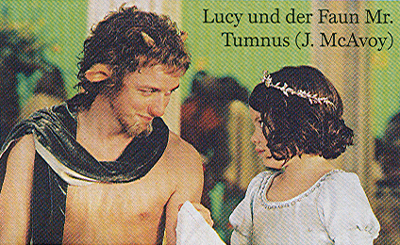
The Lion, the Witch and the Wardrobe Diaries: Part 3 – Sony Pictures Imageworks & Mr. Beaver
In the third installment of VFXWorld’s exclusive production diaries, visual effects supervisor Jim Berney of Sony Pictures Imageworks chronicles the creation of photoreal Mr. Beaver from early test through final animation for The Chronicles of Narnia: The Lion, the Witch and the Wardrobe. Includes QuickTime clips!
By Jim Berney
My Own History With the Book
 I first became aware of C.S. Lewis’ The Lion, the Witch and the Wardrobe in 1971 in kindergarten. My teacher started to read the story to us, and I created the world in my head. She only read for a few days and then we moved away, but I still wondered what the rest of the story was. Then while living in Stockholm in 1989, I was traveling on a train, talking about books with a guy I’d just met. He was telling me about The Lion, the Witch and the Wardrobe, and I said, “I know that book – you’ve heard of that book?” I thought, I’ve got to complete that story, but, being in college, I never did. And then, here at Imageworks about four years ago, we’d just finished working on The Lord of The Rings: The Two Towers, and I was trying to figure out what the next big property out there would be, and I was thinking: I bet it’s the Narnia series.
I first became aware of C.S. Lewis’ The Lion, the Witch and the Wardrobe in 1971 in kindergarten. My teacher started to read the story to us, and I created the world in my head. She only read for a few days and then we moved away, but I still wondered what the rest of the story was. Then while living in Stockholm in 1989, I was traveling on a train, talking about books with a guy I’d just met. He was telling me about The Lion, the Witch and the Wardrobe, and I said, “I know that book – you’ve heard of that book?” I thought, I’ve got to complete that story, but, being in college, I never did. And then, here at Imageworks about four years ago, we’d just finished working on The Lord of The Rings: The Two Towers, and I was trying to figure out what the next big property out there would be, and I was thinking: I bet it’s the Narnia series.
 About two years ago, I was in between projects and getting a little nervous. Deborah Giarratana, our rep, always has her ear to the ground about what’s coming up, and she told me about The Lion, the Witch and the Wardrobe. While she wasn’t certain that I’d want to be a part of it on a limited budget, what she didn’t know was my history with the book. I really did want to do it, and I thought: They’ve got to get it right. I knew the budget would get bigger, because there are not a whole lot of properties left that have this kind of scope and history. When I read the script, it reinforced what I’ve always had in my head about the story: that initial walk through the wardrobe was my introduction to fantasy, that initial world, and that they’d really pulled it off in the script. What I liked about it was that the characters were diverse, both good and evil.
About two years ago, I was in between projects and getting a little nervous. Deborah Giarratana, our rep, always has her ear to the ground about what’s coming up, and she told me about The Lion, the Witch and the Wardrobe. While she wasn’t certain that I’d want to be a part of it on a limited budget, what she didn’t know was my history with the book. I really did want to do it, and I thought: They’ve got to get it right. I knew the budget would get bigger, because there are not a whole lot of properties left that have this kind of scope and history. When I read the script, it reinforced what I’ve always had in my head about the story: that initial walk through the wardrobe was my introduction to fantasy, that initial world, and that they’d really pulled it off in the script. What I liked about it was that the characters were diverse, both good and evil.
The filmmakers originally planned to have one visual effects company bid to do all 1,400 shots, which was giant. They had about 10 main CG characters, but there were 40 different creatures to build, and multiple variations on the theme (not just one centaur, but 10 distinctly different centaurs). Besides Imageworks, the other effects houses they were talking to were ILM and Rhythm & Hues. The first step for each one was to do an animation test on some of the CG characters in The Lion, the Witch and the Wardrobe.
The Beaver Test
We started with an animation test, which gave us a chance to work with director Andrew Adamson, and he could also see the process he’d be working with, and not just the dollar amount of our bid. The test of the Beaver character began with literally just some stills the filmmakers shot while location scouting. They gave us some plates and two dialogues pulled out of the movie, and we started putting a beaver together. I believe they gave us a model from their original rotoscan, and we started rigging it to animate without muscles but furring it and figuring out the plate. We turned it into a day for night and put the lamppost into it, where it’s a dark glowing forest in the snow and this beaver came down and gave this absolutely random line.
[Click here for the rest of Part 3]
Registration is free
or use the slashdot login (slashdot / slashdot)


